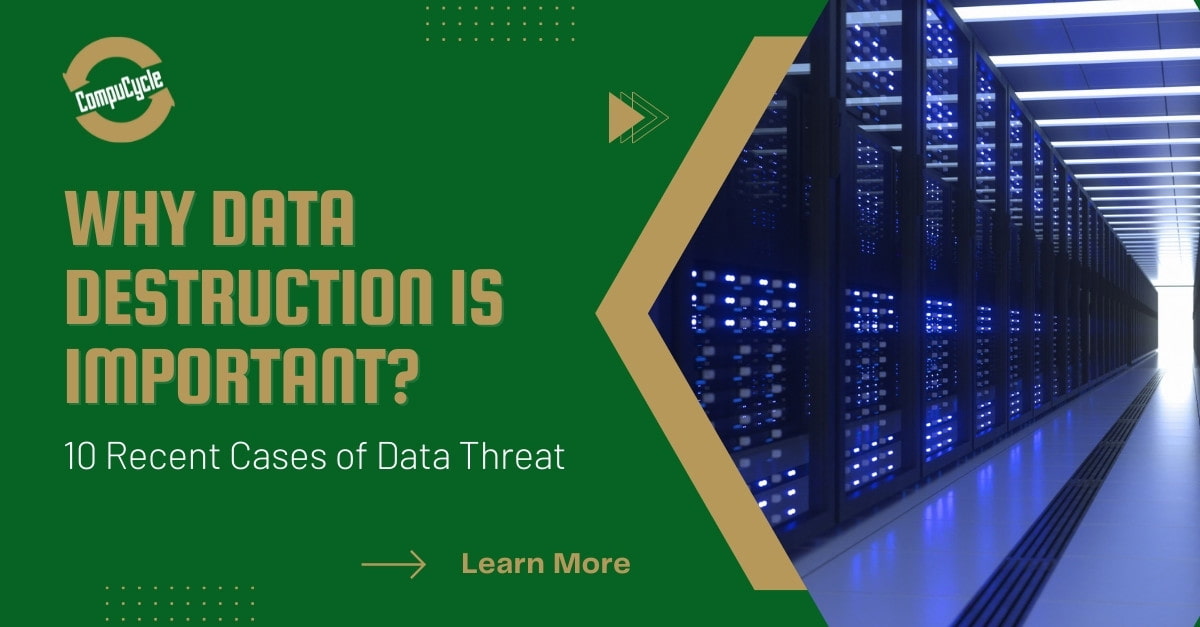Enhancing Cyber Security through Advanced Data Destruction Approaches
Enhancing Cyber Security through Advanced Data Destruction Approaches
Blog Article
The Essential Nature of Information Destruction in Upholding Computer System Protection Providers and Protecting Against Unauthorized Accessibility
In an age where information breaches and identity burglary are progressively widespread, the relevance of effective data destruction can not be overemphasized. Organizations needs to acknowledge that the failure to effectively get rid of delicate information postures not only lawful and monetary threats but likewise a prospective disintegration of client count on. Different approaches, from data cleaning to physical damage, function as crucial safeguards versus unauthorized gain access to. Nevertheless, comprehending the ramifications of information damage practices and conformity with policies raises necessary concerns about the competence of present strategies and their lasting viability despite progressing dangers.
Significance of Data Destruction
In a significantly electronic globe, the relevance of data damage can not be overemphasized. As organizations generate substantial amounts of sensitive information, the prospective repercussions of falling short to properly take care of and get rid of of that data become significantly severe. Data breaches, identity burglary, and business espionage pose considerable hazards, emphasizing the requirement of reliable data devastation techniques.

In addition, as technology evolves, so too do the approaches through which harmful stars look for to manipulate sensitive details. Organizations should remain cautious and proactive in their information destruction approaches to protect against these developing threats. By prioritizing data damage, business not only secure their possessions but also foster depend on among clients and stakeholders, demonstrating a commitment to liable information management and safety techniques.
Approaches of Effective Data Devastation
To guarantee the complete and permanent devastation of sensitive data, organizations can utilize a selection of effective methods tailored to their details needs. Among one of the most usual techniques is information wiping, which includes making use of specialized software to overwrite existing data multiple times, making recovery virtually impossible. This is specifically beneficial for solid-state drives and tough drives, where typical removal approaches are insufficient.
An additional effective strategy is degaussing, which utilizes solid magnetic areas to interrupt the magnetic domains on storage space media, making the information irretrievable. This method is specifically fit for magnetic storage gadgets, such as tape drives and hard drives.
Physical devastation is likewise a practical option, entailing the shredding, crushing, or incineration of storage devices. This approach assurances that information can not be recouped, making it suitable for companies dealing with highly delicate information.

Conformity With Information Security Laws
Organizations need to not just concentrate on reliable information destruction methods but additionally ensure compliance with data defense regulations that regulate just how delicate info is dealt with and dealt with. Adhering to these policies is crucial for securing personal information and keeping client count on. Regulations such as the General Information Security Law (GDPR) in the European Union and the Medical Insurance Mobility and Responsibility Act (HIPAA) in the USA impose rigorous guidelines on data administration, that include needs for the safe and secure disposal of delicate details.
To achieve compliance, companies have to implement thorough data destruction plans that straighten with these lawful frameworks. This includes identifying data that requires damage, establishing methods for safe methodsâEUR" such as shredding physical media or using software that satisfies sector requirements for information wipingâEUR" and preserving in-depth documents of devastation tasks. Routine audits needs to be conducted to ensure adherence to these plans and to identify any prospective areas for renovation.
Failing to adhere to information protection laws can lead to considerable lawful ramifications, including hefty penalties and damage to a company's online reputation. For that reason, incorporating conformity right into data damage practices is not only a legal commitment but likewise a vital component of a durable info protection approach.
Consequences of Poor Information Handling
Poor data handling can cause extreme effects that prolong beyond prompt operational troubles. Organizations may encounter substantial financial losses due to data violations, which typically cause costly remediation efforts, legal fees, and regulatory fines. These economic effects can prevent and strain sources growth, eventually impacting a company's bottom line.
Moreover, poor information handling can severely harm a company's track record. Partners, customers, and stakeholders might lose count on an entity that fails to protect sensitive info, resulting in decreased client commitment and possible loss of business possibilities. This disintegration of trust can link take years to rebuild, if it can be brought back whatsoever.
Furthermore, organizations can deal with lawful ramifications emerging from non-compliance with data protection laws. Such violations may lead to charges and investigations, compounding the monetary problem and further tarnishing the company's image.
In the realm of cybersecurity, insufficient information administration practices can produce susceptabilities that make systems a lot more prone to unauthorized access and cyberattacks. Inevitably, these effects underscore the important relevance of applying durable data taking care of procedures to protect sensitive info you can try this out and preserve organizational integrity.
Finest Practices for Secure Information Disposal


First of all, data ought to be identified according to its sensitivity. Delicate info requires extra rigorous disposal methods, such as shredding physical files and utilizing innovative software program for digital data cleaning. Employing qualified information damage services makes certain compliance with industry laws and criteria.
Secondly, organizations ought to apply an information disposal policy that mandates regular audits. This plan needs to lay out the treatments for data retention and devastation, ensuring that outdated data is disposed of without delay and securely. Educating workers on these procedures is vital to promoting a society of security recognition.
Finally, maintaining in-depth records of disposed information improves responsibility and provides a clear audit route. This paperwork must include the kind of data ruined, the technique utilized, and the date of disposal.
Final Thought
Embracing robust approaches such as data cleaning, degaussing, and physical devastation, together with compliance with guidelines like GDPR and HIPAA, is necessary for safeguarding delicate information. Ignoring proper information disposal methods can lead to extreme consequences, including information additional resources violations and lawful repercussions.
In an era where data breaches and identification theft are progressively common, the importance of efficient data devastation can not be overemphasized. data destruction. Data violations, identification burglary, and business espionage posture considerable risks, underscoring the requirement of reliable data damage methods
Conformity with regulations such as GDPR and HIPAA mandates that companies apply strict information defense procedures, including the safe and secure damage of data at the end of its lifecycle.
By focusing on information damage, companies not just secure their assets yet also foster count on amongst stakeholders and customers, showing a dedication to responsible information monitoring and security methods.
Organizations should not only concentrate on effective information devastation methods but additionally guarantee compliance with information defense guidelines that regulate just how sensitive details is managed and disposed of.
Report this page